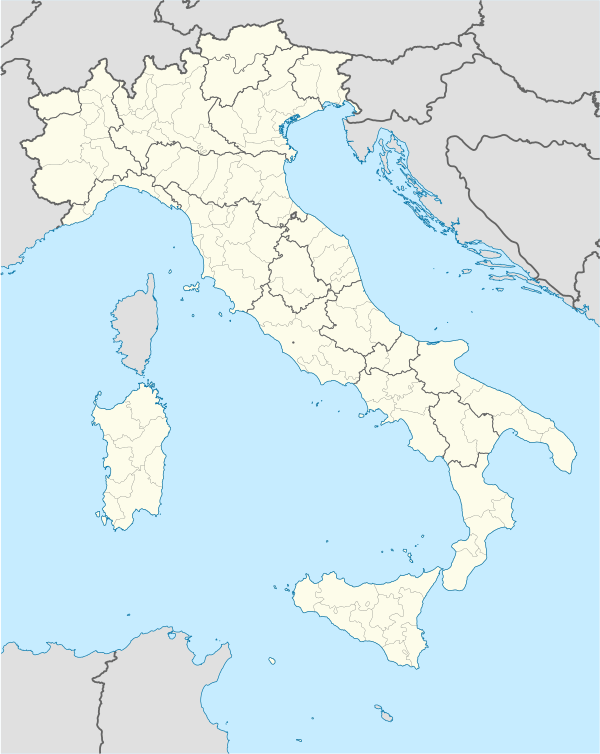San Benigno Canavese
| San Benigno Canavese | ||
|---|---|---|
| Comune | ||
| Comune di San Benigno Canavese | ||
|
The Ricetto gate. | ||
| ||
 San Benigno Canavese Location of San Benigno Canavese in Italy | ||
| Coordinates: 45°13′26″N 7°46′57″E / 45.22389°N 7.78250°ECoordinates: 45°13′26″N 7°46′57″E / 45.22389°N 7.78250°E | ||
| Country | Italy | |
| Region | Piedmont | |
| Province | Turin (TO) | |
| Frazioni | Cascina Mure, Cascina Bruciata | |
| Government | ||
| • Mayor | Alberto Focilla | |
| Area | ||
| • Total | 22.2 km2 (8.6 sq mi) | |
| Elevation | 194 m (636 ft) | |
| Population (Dec. 2004)[1] | ||
| • Total | 5,307 | |
| • Density | 240/km2 (620/sq mi) | |
| Demonym | Sambenignesi | |
| Time zone | CET (UTC+1) | |
| • Summer (DST) | CEST (UTC+2) | |
| Postal code | 10080 | |
| Dialing code | 011 | |
| Patron saint | San Tiburzio | |
| Saint day | July 14 | |
| Website | Official website | |
San Benigno Canavese (Piedmontese: San Balègn) is a comune (municipality) in the province of Turin in the Italian region Piedmont, located about 20 km northeast of Turin, whose territory is bordered by the Malone and Orco rivers.
Main sights
- Fruttuaria Abbey (founded in 1003). Of the original Romanesque edifice, only the bell tower remains today.
- Griffons Mosaic, considered amongst the most notable example of mosaic art in Piedmont.
- Ricetto ("Fortified store", 15th century), of which one of the three gates and a corner tower are visible today.

